Cells, Genes, Biomolecules and Tissues
Cells –
In the previous lesson, we examined structures which make up our body. The Ultimate functional unit of our body is Cell. A remarkable fact to be noted is, a Cell has almost similar functioning organ system, like our body, called Organelles.
We will now study briefly the functioning of the microscopic structure i.e. Cell. Any Cell is basically a chemical factory. It produces different substances (Biomolecules) as per the need to maintain itself, the surrounding tissues and other systems. (Fig. 1)
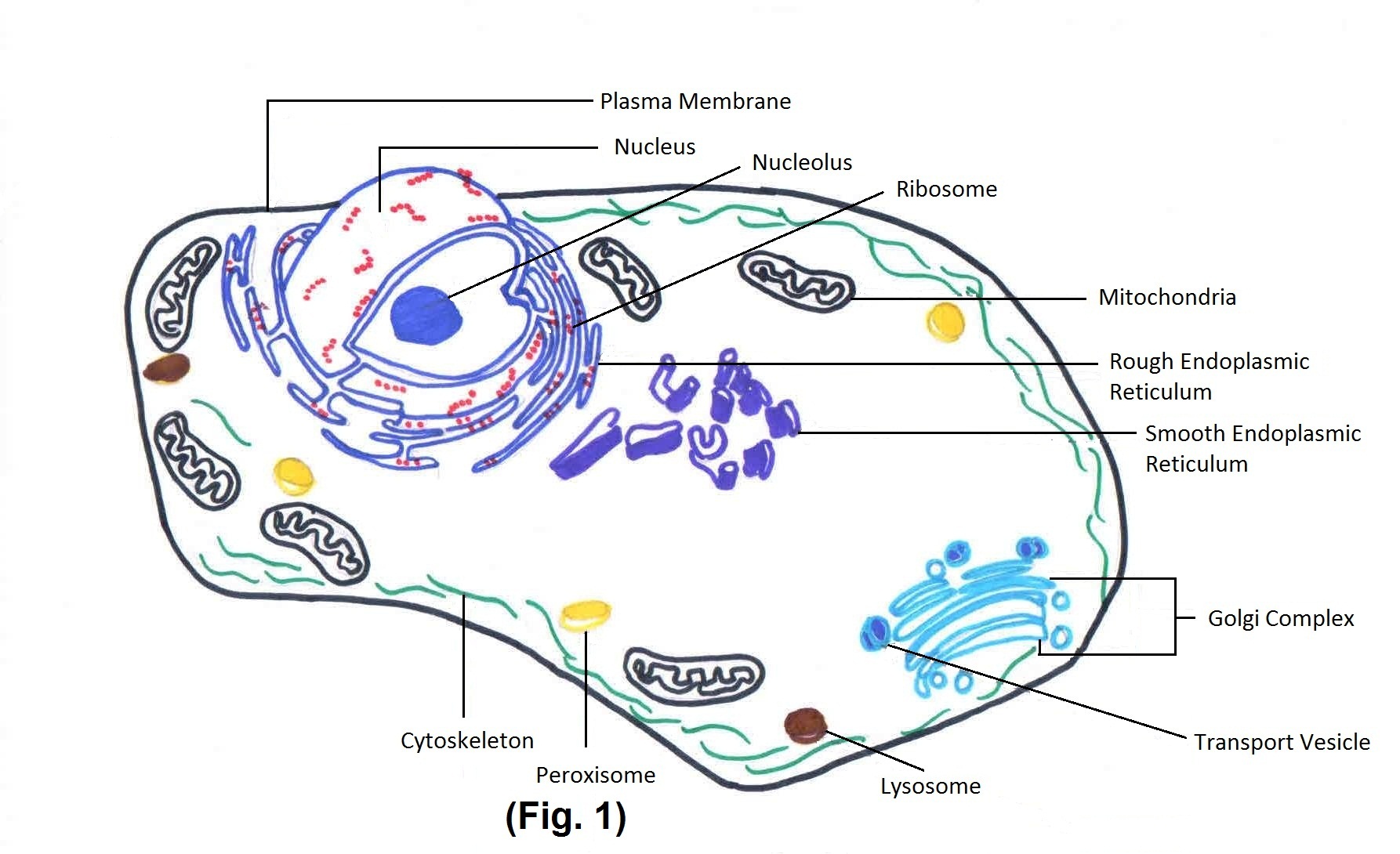
How does a cell know what to do? The Molecule, like hormones, present in the surrounding interstitial fluid act as signals.
The signal represents information that is detected by specific receptors on the plasma membrane. It is converted into a cellular response consisting of setting up a chemical process inside the cell. This conversion of information is called signal transduction. This activity is enhanced by enzymes acting in integrated fashion.
Generally, the response acts as a feedback to receptor to shut off the activity. (Fig. 2)
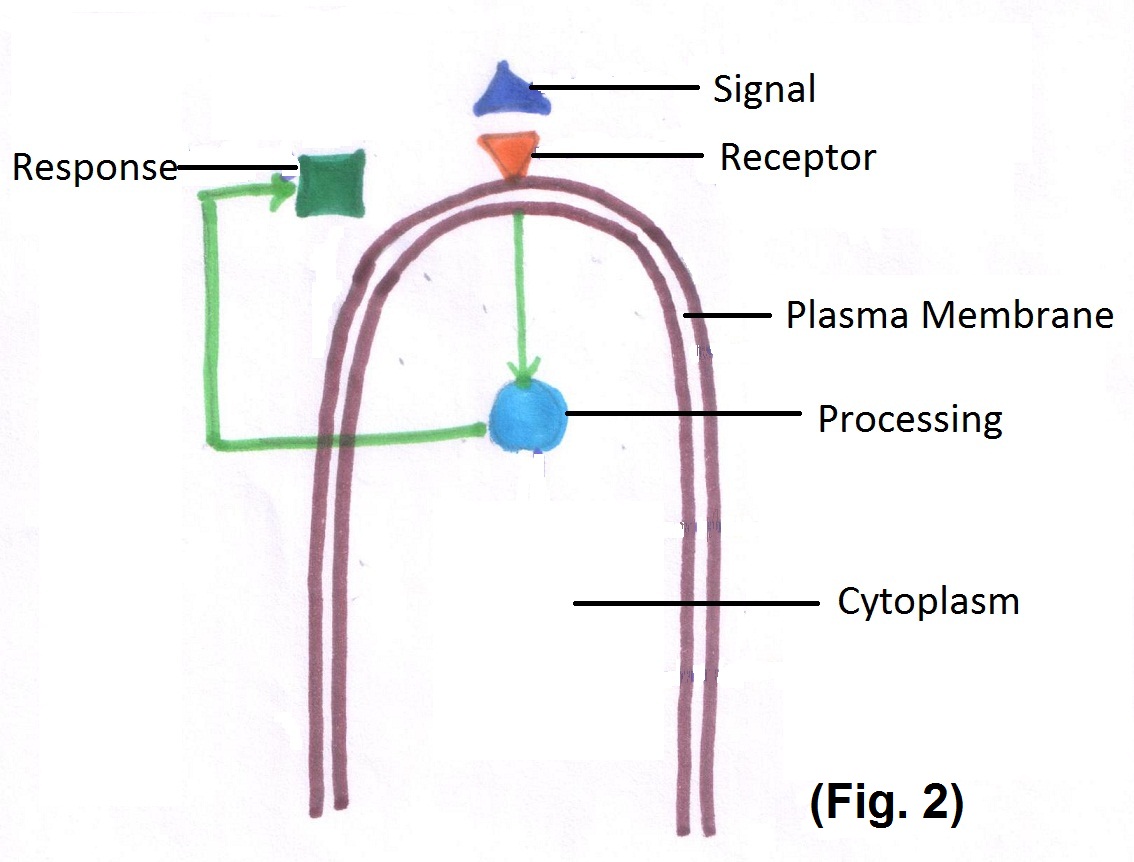
The Response, in the form of a specific protein molecule, is carried to a specific gene, located into the nucleus. We will study gene subsequently. Suffice to say that gene is a component of a large molecule called “DNA” (Deoxyribonucleic acid). Once the signal reaches a particular gene, messenger RNA (Ribonucleic acid) carries a copy of the message, so to say; from the gene to Ribosome. Nucleolus is the region of the nucleus where ribosomal RNA synthesis occurs. The Ribosome is the large assembly of RNA and Protein that synthesizes protein under direction from MRNA.
Once formed, protein travels to various destinations depending on its function. (Fig. 3)

Mitochondria
They are responsible for providing energy in the form of ATP (Adenosine triphosphate). (Fig. 4)
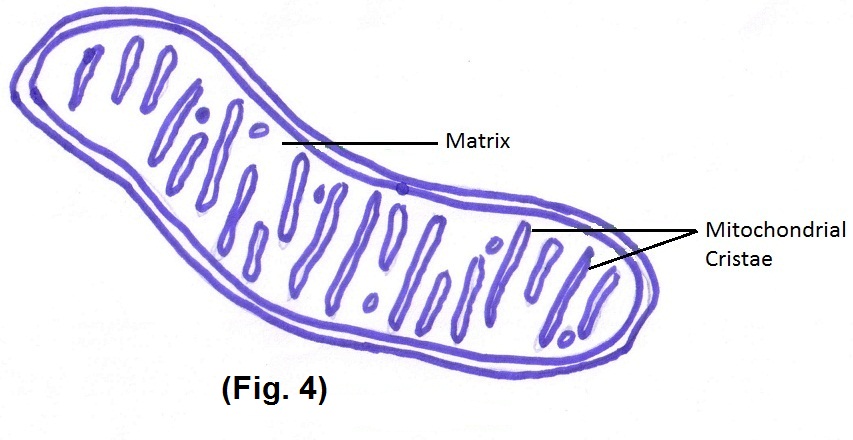
Rough Endoplasmic Reticulum (RER)
Different proteins are synthesized here. (Fig. 5)
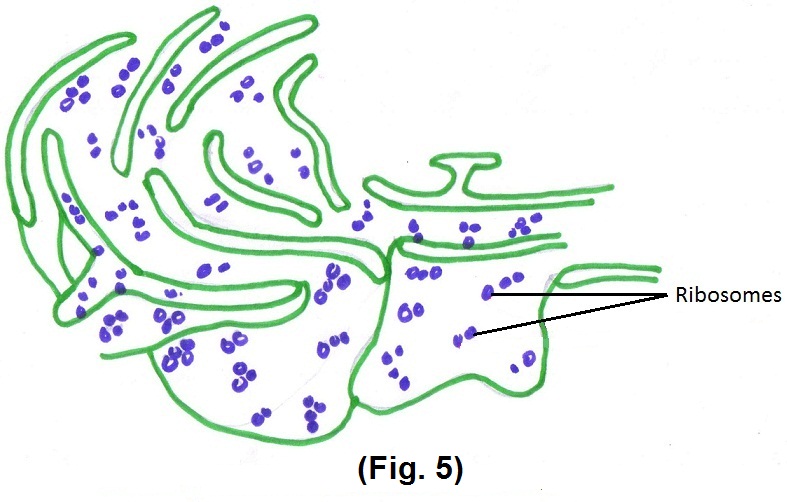
Smooth endoplasmic Reticulum (SER)
It is the site of lipid synthesis and drug metabolism. In addition, there are other organelles to carry out different functions. (Fig. 6)
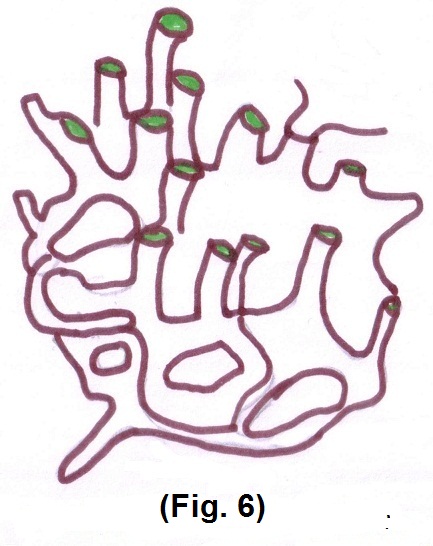
Golgi Complex
It processes packages and targets proteins to other organelles for export. (Fig. 7)
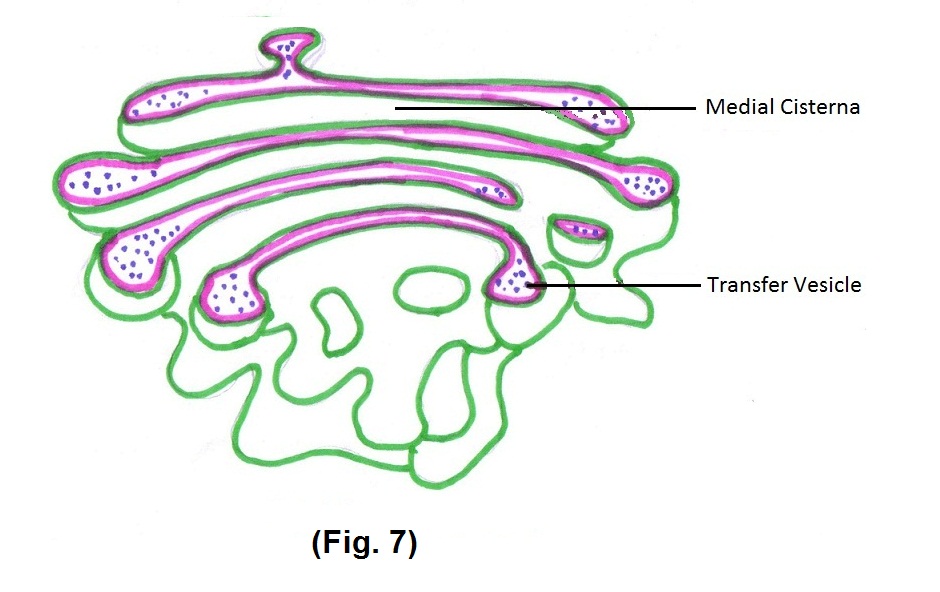
Transport vesicle
It shuttles liquids and proteins between ER, Golgi complex and plasma membrane.
Peroxisome
It oxidizes fatty acid.
Lysosome
It degrades intra-cellular debris.
Cytoskeleton
One more important structure is Cytoskeleton. It provides support to other organelles in the cytoplasm.
Such a small microscopic structure like a cell, prepares thousands of proteins. The overall error rate of protein synthesis is one mistake per 104 amino acids incorporated. Such are the wonders of nature.
Biomolecules –
A few words on Biomolecules. Basically, Biomolecules are carbon compounds. A cell contains roughly a thousand of such molecules e.g. amino acids, sugars etc. These are the major constituents which participate in pathways of chemical interactions which are common to all cells. There are macromolecules like proteins which are formed by the small molecules. Depending on what function it serves, a molecule can be termed as functional, structural or informational like nucleic acid.
Genes –
Gene is a small part of chromosome. It codes, means gives instructions to form a long chain of amino acids (polypeptide chain) or RNA molecule.
Chromosome is single large DNA molecules and its associated proteins. It contains many genes which stores and transmits genetic information. To understand what is DNA, think of two identical ropes twisted upon each other as shown in the diagram. (Fig. 8)
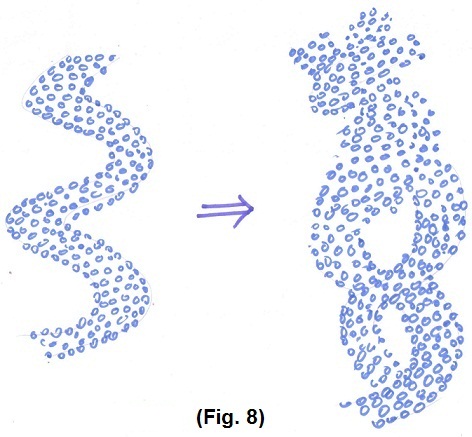
Each rope, technically called strand, means a thread like structure, is made up of four different deoxyribonucleotides arranged in a specific manner. Another important aspect to be noted is that each strand is a mirror image of opposite strand.
At the time of cell division, the two strands separate and each serves as a template, means provides information to form identical structures. Thus, the original structure with 2 strands on either side twisted together is formed for each new cell.
How do genes control proteins synthesis? Look at the figure. (Fig. 9)
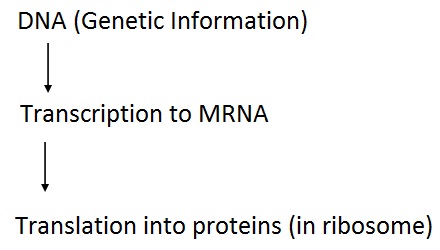
When Information reaches to DNA from the information molecules released after receiving messages in cell wall, a specific gene is activated. A message is transcripted, means copied, onto messenger RNA (mRNA) which reaches ribosome, a site of protein synthesis. The Product i.e. synthesized protein is responsible for feedback circuits to halt the process.
Tissues –
In Human system different cells perform different functions. A group of cells performing similar functions are called as tissue. We will examine important tissues in human system.
Epithelium
Epithelium provides a boundary. It lines inner surface of tubular organs and the outer surface of other organs. Epithelium is involved in transport, absorption & secretion
Depending on function, epithelial structure varies e.g. cilia are prominent where surface transport is required e.g. cilia in laryngo-tracheal tree. (Fig. 10)
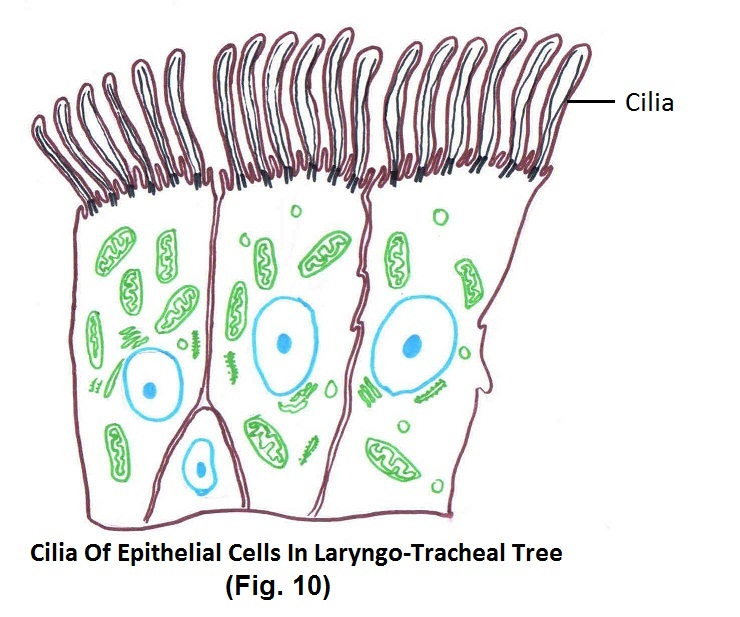
Brush borders are seen where absorption is necessary e.g. brush border in proximal convoluted tubules in kidney. (Fig. 11)
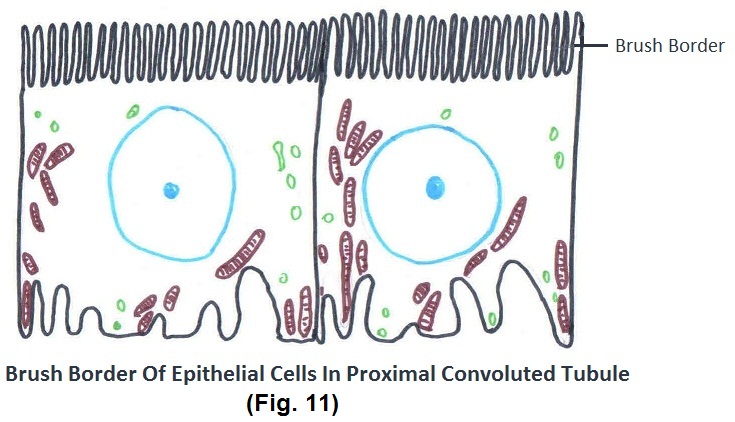
Glands, either exocrine or endocrine, are also epithelial tissues. Their function is to secrete specific substances. Exocrine glands secrete the product on free surface while substance produced by endocrine glands enter into the blood directly e. g. hormone. Neuro epithelia such as the taste buds or olfactory mucosa are concerned with sensory perception.
Epithelial tissue comes in direct contact with environment. Therefore, the mechanism for renewal and repair are well developed. In disease condition it may get disturbed. That is why malignant tumors of epithelial origin are common.
Connective Tissue
It consists of cells and extracellular material providing support and framework for the other tissues. The connective tissues consist of extracellular fibers and amorphous ground substance. The fibers are protein viz. collagen and elastin. Loose connective tissues are abundant in the body and are characterized by cells like fibroblasts, adipocytes, macrophages etc. Adipose tissue containing fat constitutes about 15% body in normal adult
Skeletal tissue
Cartilage and bone are specialized connective tissue forming skeletal framework. Cartilage provides a cushion like support to the joint. Bones are hard because of inorganic salts as their constituents.
Muscular Tissue
This tissue is characterized by specialized cells called muscle fibers which contract on stimulation. This occurs due to chemical energy in the form of ATP (Adenosine triphosphate) getting transformed into mechanical energy due to enzyme action. Smooth muscles also called visceral involuntary muscles are present in the wall of Viscera like intestine.
Skeletal muscles present in body skeleton are also called striated muscles because of obvious striations, means appearance like parallel lines. They are under voluntary control.
Cardiac muscles are highly specialized form of involuntary striated muscles. Its involuntary action is due to conducting action of the heart starting from sinoatrial (SA) node.
Nervous tissue
It consists of neurons, which are responsible for carrying information by producing action potential. There are large numbers of supporting cells which are called as Neuroglial cells like Astrocytes, Microglial cells etc.
In Subsequent lessons we are going to present structural and functional aspect of individual system. Whatever we covered in the two lessons is the basic information.
